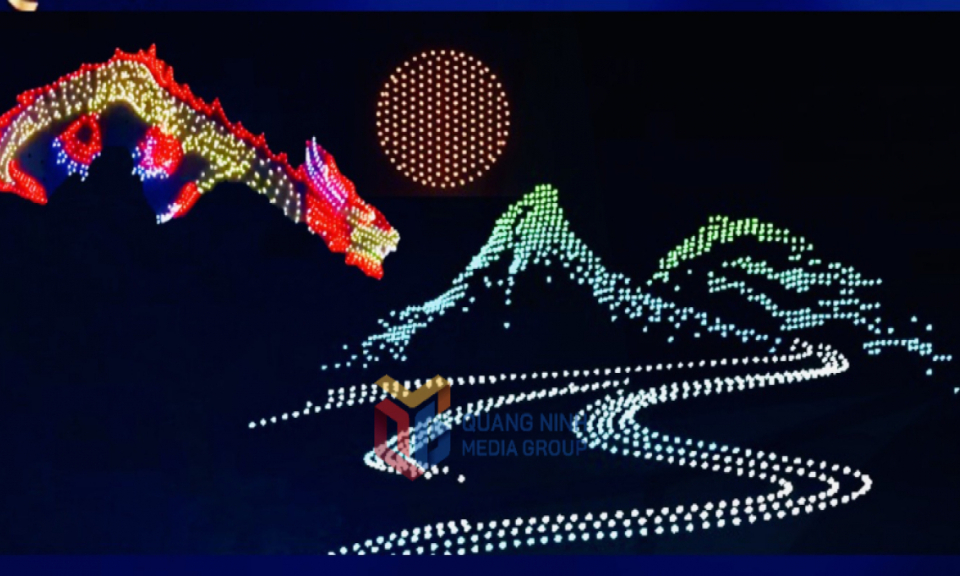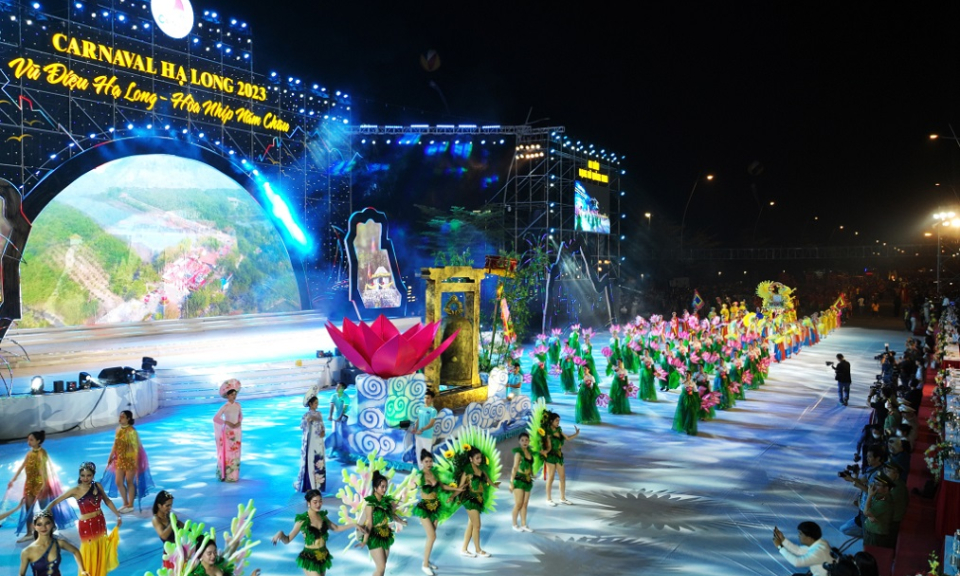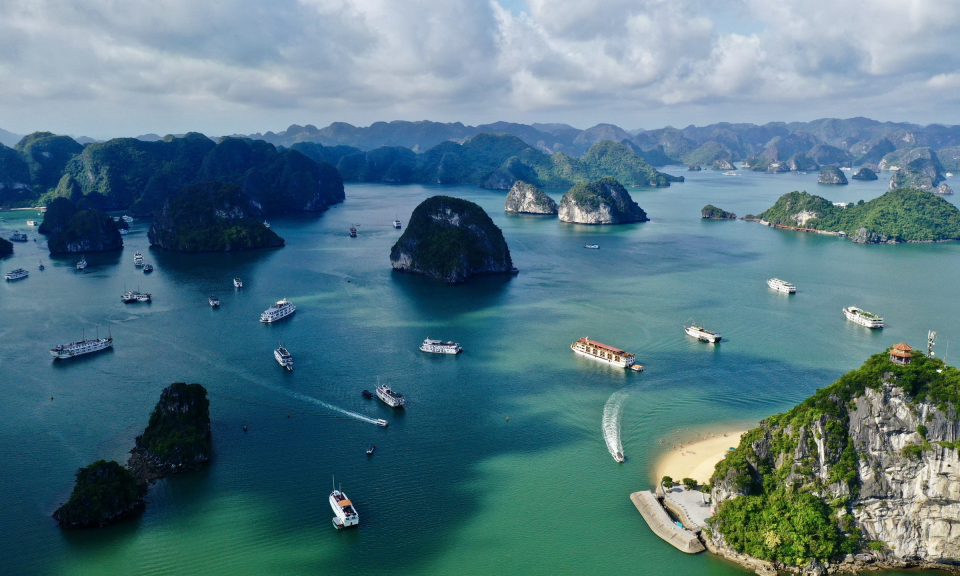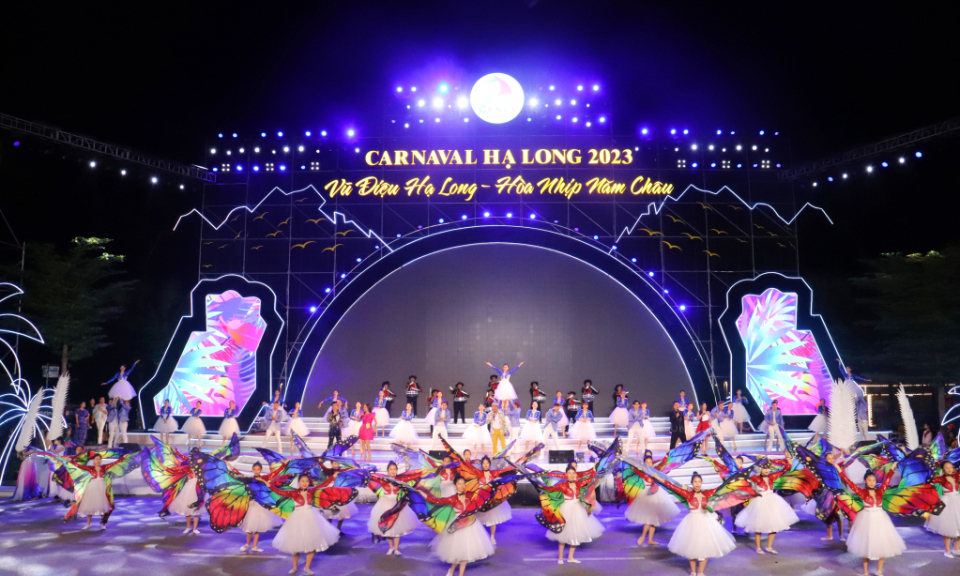Yen Tu Festival - true religious color
A popular saying goes: "Even after living 100 years of a virtuous religious life, you cannot be called a true religious person until you go to Yen Tu ".
 |
A pilgrimage to Yen Tu Festival is a deeply meaningful journey for any true Vietnamese Buddhist and a fascinating experience for sightseers.
Dong Pagoda is located 1,068m above sea level at the top of Yen Tu Mountain in the north-eastern coastal province of Quang Ninh. Yen Tu is known for its ancient solemn, silent pagodas, shrines and towers that mingle with the majestic mountains. It has been a centre of Buddhism for centuries, and is the homeland of the Buddhist Truc Lam sect. Travellers go to the Yen Tu Festival to get away from their everyday lives and make a religious pilgrimage to the pagodas in the middle of a spectacular natural environment.
The history...
Under the Ly dynasty, Phu Van pagoda was in Yen Tu and Yen Ky Sinh was its warden. Yen Tu only really became a major Buddhist centre when Emperor Tran Nhan Tong abdicated his throne to establish the Thien Truc Lam Buddhist sect and become its first leader under the religious name Dieu Ngu Giac Hoang Tran Nhan Tong (1258-1308). He ordered the construction of hundreds of religious buildings on Yen Tu Mountain that were suitable for teaching and following a religious life.
After his death, his successor, Phap Loa Dong Kien Cuong (1284 - 1330), the second leader of Thien Truc Lam, compiled a set of books “Thach that ngon ngu” and built 800 pagodas, shrines and towers containing thousands of valuable statues during the 19 years of his religious life. The famous Quynh Lam and Ho Thien pagodas were built during this time.
The third progenitor of Thien Truc Lam was Huyen Quang Ly Dao Tai (1254 - 1334), who established the Buddhist teaching centre Phap Loa.
The mountain scenery, beautiful pagodas and hermitages, inspired King Tran Nhan Tong, who ruled the country from 1279 to 1293, to pass the throne to his son so he could lead the life of a Buddhist monk at Yen Tu. He founded the Truc Lam meditation sect, which made Yen Tu the country’s leading Buddhist center.
During the Le and Nguyen dynasties, Yen Tu became the focal point of Vietnamese Buddhism and underwent a number of restorations. It is a confluence of different historical styles, as evidence in the many different patterns and ornamental elements that decorate the structures.
... and the festival
Yen Tu Festival begins annually on the 10th day of the first lunar month and lasts for three months. Tens of thousands of pilgrims start their journey to the uppermost shrine with a solemn ritual at the base of Yen Tu Mountain.
 |
During the months of the festival, people flock from near and far to the Buddhist land to express their devotion and aspirations or to rid themselves of sorrows and sadness. Others go to Yen Tu for sightseeing and to enjoy the pure, clean air of the mountain region. Foreigners visit Yen Tu to see the famous, mysterious tourist attraction and beauty spot. Many cultural and historical relics are carefully preserved in Yen Tu, and it is also home to a rare ecosystem.
Among the wide variety of vestiges in Yen Tu, there are 11 pagodas and hundreds of shrines and towers. Pilgrims climb the mountain on a path through the forest to see Dong Pagoda at the peak 1,068m above sea level, passing by pagodas, a tower, and a stream that appear and disappear under the thick foliage along the way. After burning joss-sticks at the top, it is as if you are lost in nature somewhere between the earth and sky. On a clear day, you can see almost all the northeastern area from here.
The pilgrimage route from the foot of the mountain to the pagoda is nearly 30 km long, however you can get to Hoa Yen Pagoda at 534m above sea level via the new cable car and see two beautiful 700-year-old frangipani trees. From there, you will feel you are walking on clouds as you walk up the stairs to minor pagodas along the path leading to Dong Pagoda.
The faithful visit the sites along the path to pay homage and show their devotion, or find consolation for their troubles. Those who make it all the way to Dong pagoda will experience the magnificence of Yen Tu's forests and on top of Yen Tu Mountain, one feels like they're standing at Heaven's Gate shrouded in white clouds.
Source: VOV






